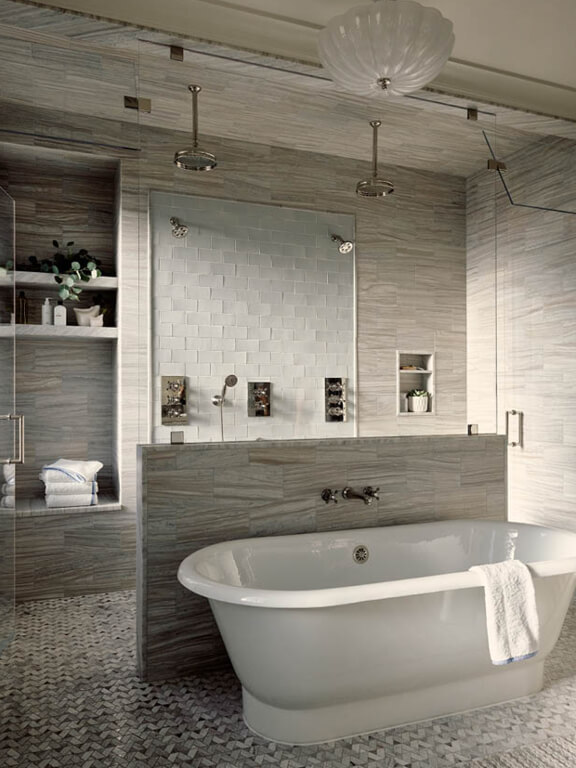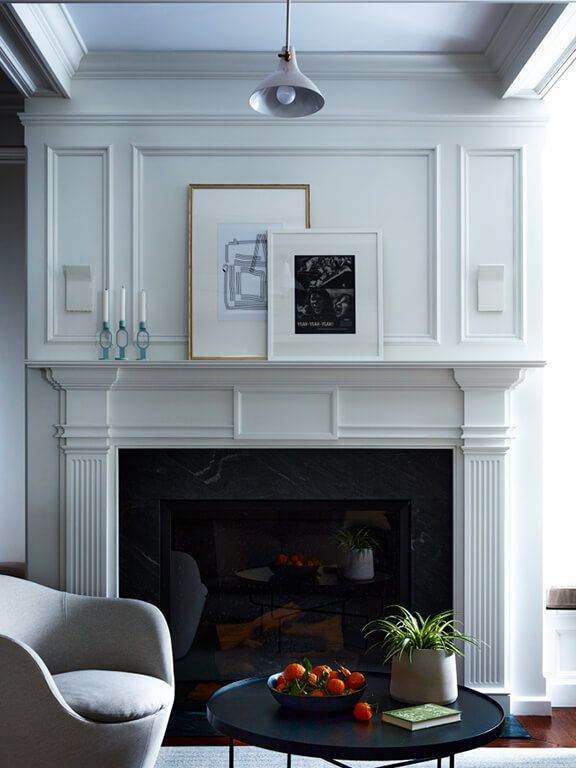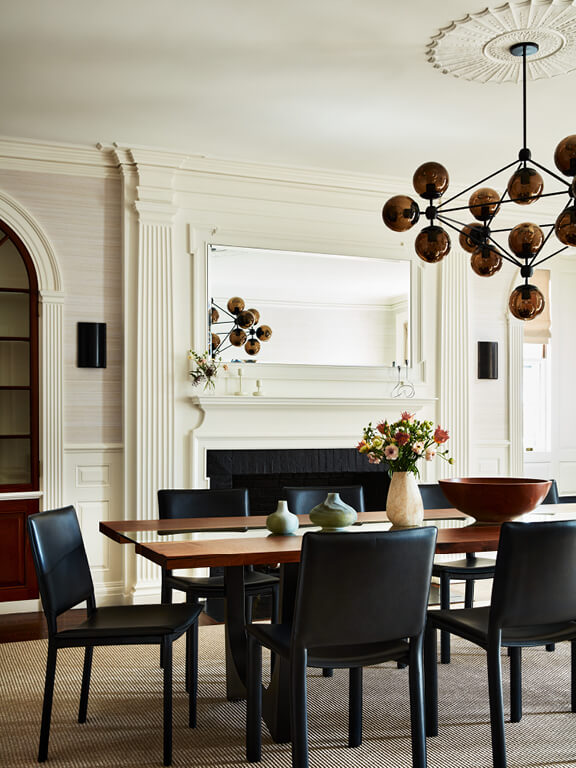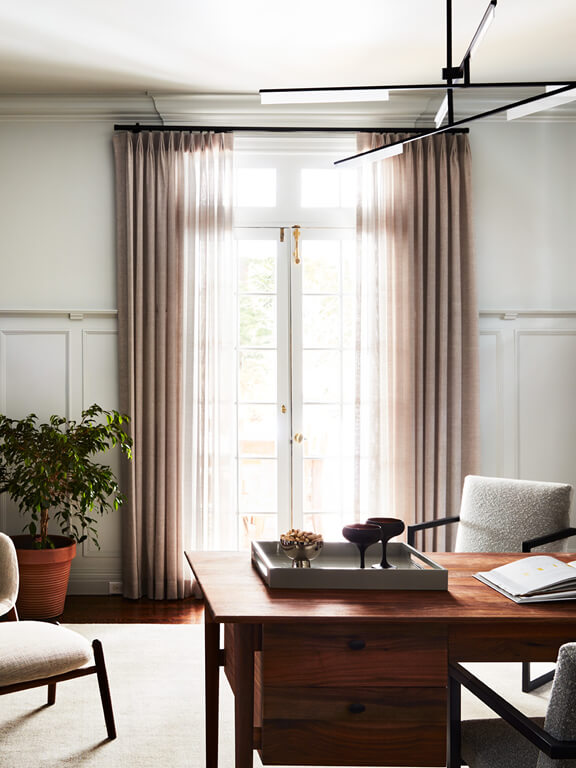The Foundation of Design
Existing conditions and schematic design provide the foundation for every successful interior design and renovation project. The design journey begins long before fabric swatches, color palettes, or furniture plans take shape. While the earliest steps may not be glamorous, they are essential: documenting what already exists and envisioning what could be. This first step in our process is technical, but it forms the backbone of every project—whether reconfiguring a kitchen, renovating a historic home, or furnishing a new build.
Laying the Groundwork
Projects begin with a foundation—both literal and figurative. Before design work or budgeting can start, there must be a clear understanding of what exists. That clarity comes from existing condition drawings. They may not seem glamorous, but they are essential; without them, design quickly unravels.
I learned this lesson early in my career. My first job in design was at an architecture firm, fresh out of college. The work itself wasn’t inspiring, but the experience proved invaluable. Day after day, I carried a tape measure, a laser, and a sketchbook. I measured every inch of a space (including the angles), drafted it with a 0.2 pencil, and later translated it into CAD. That constant practice shaped me as a designer, giving me the ability to draft quickly and accurately. Decades later, I rarely take the measurements myself, relying instead on surveyors, junior staff, or third-party professionals. Still, the principle remains the same: no project moves forward without accurate drawings. And in a pinch, I’m not above rolling up my sleeves for a site measure.
Accurate Measurements, Fewer Surprises
For construction projects, the need is obvious. Builders rely on drawings for permits, demolition, and estimates. Subcontractors use them to plan their work; we use them to design and to communicate with the entire team. These drawings also guide big-picture decisions. A new kitchen may shift a window or reframe a door; those changes ripple across the home’s exterior. By starting with precise measurements, we anticipate the impact and avoid surprises later. No building is perfectly square or plumb, not even new construction, so no drawing will ever be flawless. Still, existing conditions bring us as close as possible to accuracy. They are the baseline that makes schematic design possible.
For this Boston brownstone renovation below, I documented the existing conditions myself—every floor, top to bottom. We gained access before the new owners had even closed, which allowed me to complete space planning and prepare drawings while the banks finalized their side. By the time the purchase and sale were complete, we already had a bid set of drawings, a builder on board, and an estimate in hand. That timing allowed construction to begin almost immediately after closing. The benefit was clear: no one wants a house sitting empty, especially when clients are carrying two mortgages. On projects of this scale, working quickly, staying agile, and producing accurate drawings from the start saves time, stress, and cost for everyone involved.
From left to right: the media room, complete with its original plaster moulding—an example of how we preserve architectural integrity in historic Boston homes; the kitchen, a classic space that demonstrates thoughtful planning and how traditional kitchens can be reimagined within an older footprint; and finally, the primary bath, where careful space planning allowed us to integrate a spa-like retreat seamlessly into the existing floor plate. Bottom line: the pretty photos don’t tell the whole story—before we could even furnish the space, there were years of measurements, schematic drawings, and design management that began with documenting the existing conditions two years earlier.



From Floor Plans to Furniture Fit
Existing drawings are not just for builders. They are just as important for decorating. Every furniture plan begins with a measured floor plan. Without it, we would risk mistakes that cost far more than a survey.
I once worked with a decorator who never drafted. She “eyeballed” her projects. Custom furniture was ordered without checking scale or fit. It was bold, but also reckless—especially in New England, where historic homes rarely allow extra inches. A sofa might never fit through a door. A dining table might overwhelm a small room. Guessing is not an option, our measured drawings protect clients from expensive errors. They ensure furniture arrives, fits, and enhances the space as intended.
For this large-scale decorating project in a historic Concord home, our first task was to get the client comfortably set up in nearly 10,000 square feet—a big undertaking. Before ordering even the basics, like bed frames and mattresses, we finalized floor plans for every room. With dimensions confirmed, there was no guessing when sourcing furniture, from sectionals to dining tables. We drew, sourced, and purchased with confidence, knowing each piece would fit as intended. By the time furniture—often months in production—arrived, there were no surprises, and installation ran seamlessly. From left to right: the family room, anchored by an oversized sectional (a quick-ship piece prioritized for move-in); the dining room, where a custom table was scaled to suit the generous proportions of the space; and the office, where the desk was positioned to face French doors, with lounge seating carefully placed to match the owner’s preferences. We share more about the furnishing process here.



Schematic Design: Testing Layouts and Budgets
Once we have the drawings, the creative work begins. This is schematic design. It’s the stage where ideas take form. We sketch, test, and compare layouts. Some options are too costly. Others are impossible because of code or structure. But each version helps us and the client see what works—and what doesn’t. Our goal is usually three layouts per floor. Sometimes constraints reduce that number; and budget, the footprint, and the wish-list shape the results. Even when only one or two plans are viable, the process clarifies the path forward.
During this phase, we also think about cost. Our deliverable is a ‘Bid Set of Drawings. These plans are simple, but technical: demolition, new construction, and layout. They do not include detailed millwork or interior elevations, they aren’t sufficent for getting a permit. But they are enough for a builder to estimate potential costs. The end goal is clear: one final plan and a builder aligned with the team.
First Phase of Every Project
Existing conditions and schematic design are the first phase of every project. They give us clarity, direction, and a roadmap. They also give clients confidence that the vision is grounded in reality. From there, we move to Design Development, where we refine details, explore materials, and imagine finishes. But none of that is possible without a solid beginning.
When we start with precise drawings and thoughtful schematic design, the rest of the process flows. We set a strong foundation, and from that foundation, the home begins to take shape.
